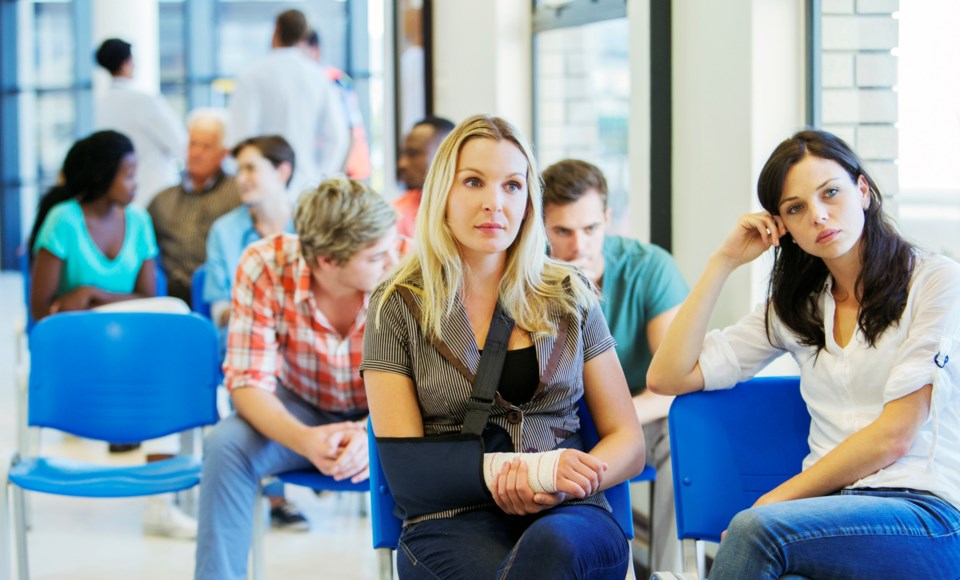As a referring hospital that serves a population of 300,000 that’s open 24/7, every day of the year, there’s never a dull moment at UHNBC’s emergency ward as hospital staff struggle to try to keep up to the demand of a never-ending flow of patients.
Just 17 beds are available in the ER and with only a limited number of staff to deal with the crush, so it’s not uncommon to see groups patients lying in stretchers in hallways or seated in the aisles outside the waiting room waiting to see a doctor.
ER patients often are left wondering how the hospital sets its priorities in triaging patients, why they have to wait so long and why some patients who arrive at ER after them are seen to first.
Emergency room doctor Christina Boucher and family physician Montana Halliday thought of a way to answer those questions and help defuse some of that patient anxiety. They formed a cultural sensitivity working group in Prince George that involved other health professionals focused on trying to improve conditions in the emergency room at UHNBC, especially for Indigenous patients. Highly-respected First Nations elders from various communities in the North gave ideas for the doctors and they did their best to implement them.
Discussions with Lheidli T’enneh elder and UNBC chancellor Darlene McIntosh spawned an idea to produce three short videos to explain the ER triage system and why the sickest, most injured patients are given priority during an ER visit, how to manage your pain while you wait to see a doctor, and alternate avenues for health care as well as the complaints process.
“Complaints in the ER are always the same, ‘Why can’t I get something for pain while I wait,’” said Halliday. “They don’t understand that to determine which pain medication you need a doctor to assess that because you might have, for example, kidney issues which would mean you can’t have certain medications.
“The nurses aren’t being mean, they just don’t have the scope to select the right pain med.”
Backed by the BC College of Family Physicians, Halliday secured $10,000 in funding and worked with Sonic Studios to create the videos, which involved doctors, nurses and Indigenous actors. The videos are now being shown hourly on the screen in the ER waiting room.
“It was quite an interesting project, hoping to bring more clarity and compassion and understanding for what goes on, considering what disarray our emergency and our hospital and our medical system is in,” said McIntosh.
“We need to do things so our First Nations people feel they’re cared for and looked after. It’s so important, and this should be a general thing across the board for any person going into emergency. They’re not there for the fun of it. They’re in pain, and a lot of times it could be the mental aspect also.”
McIntosh said First Nations people sometimes feel stigmatized when asked at ER registration if they are using drugs or alcohol or if they are carrying a weapon and she hopes the videos will help them understand that no matter what their ethnicity, everybody gets asked the same questions.
”There’s lots of First Nations people are in the north from remote reserves that don’t have the medical system there and if it’s an emergency they come to the major hospital in the North which is our hospital, and we wanted to make sure they knew they were welcome,” said McIntosh.
“Maybe the nurses or doctors coming in will watch (the videos) too and they will have that little bit of extra compassion and understanding of what the people that come in are experiencing.”



